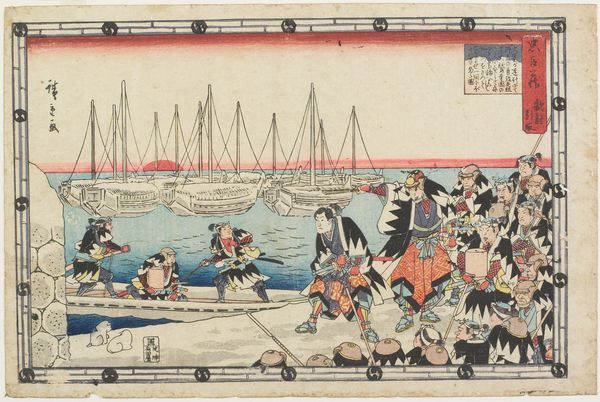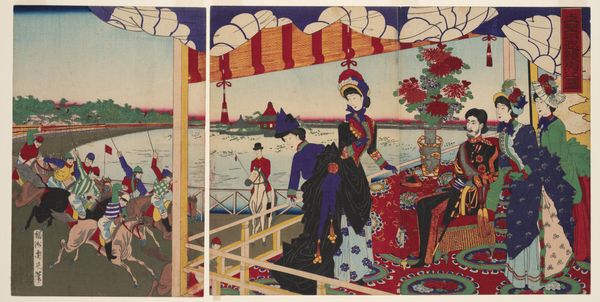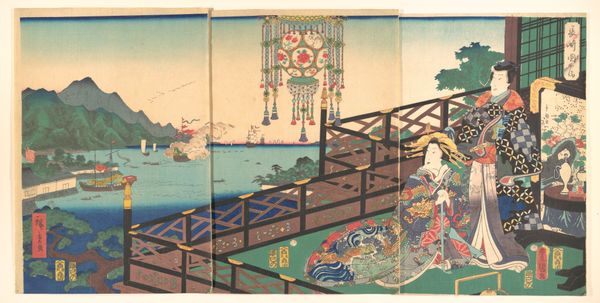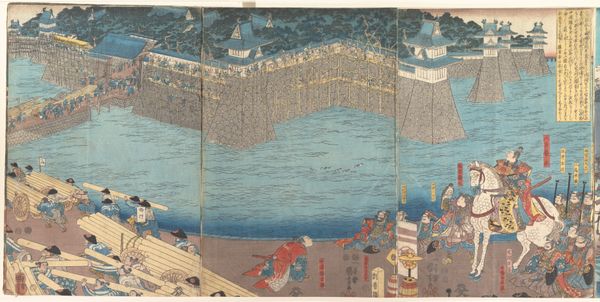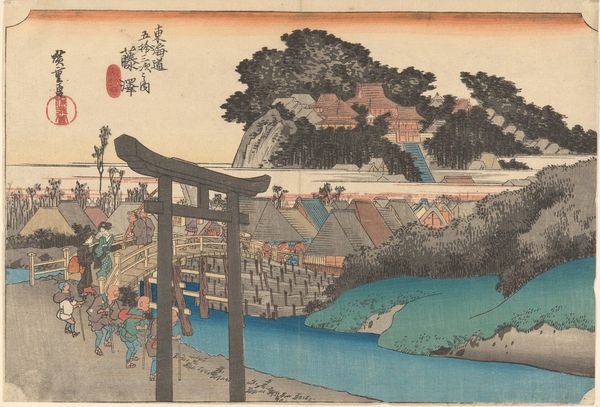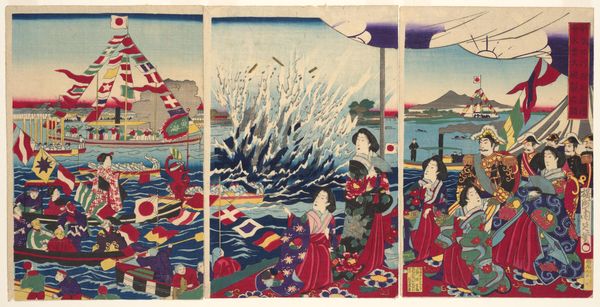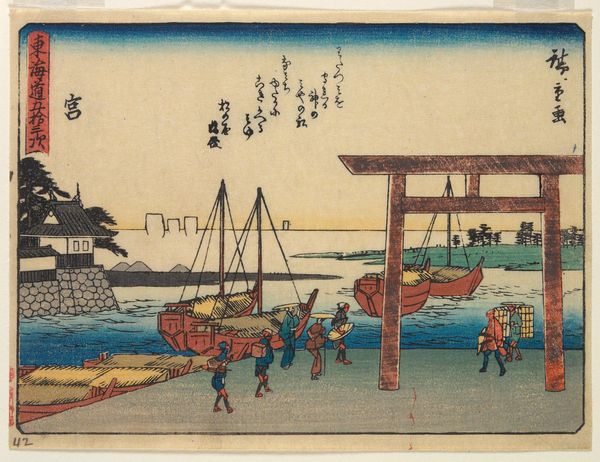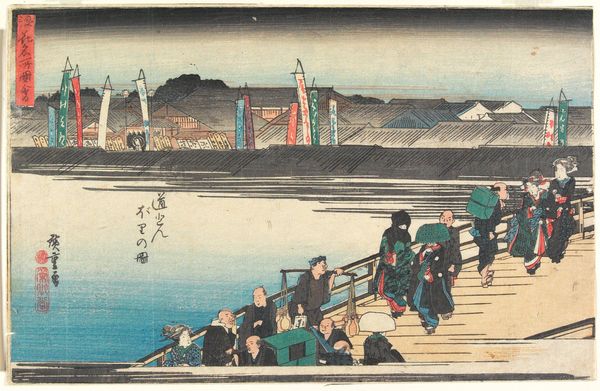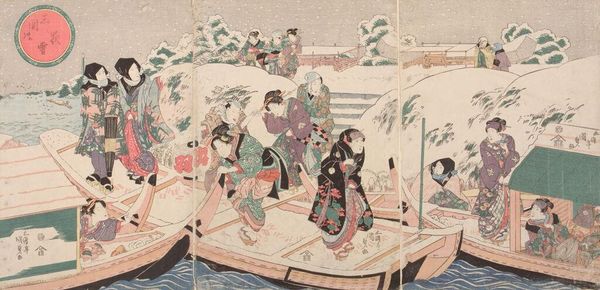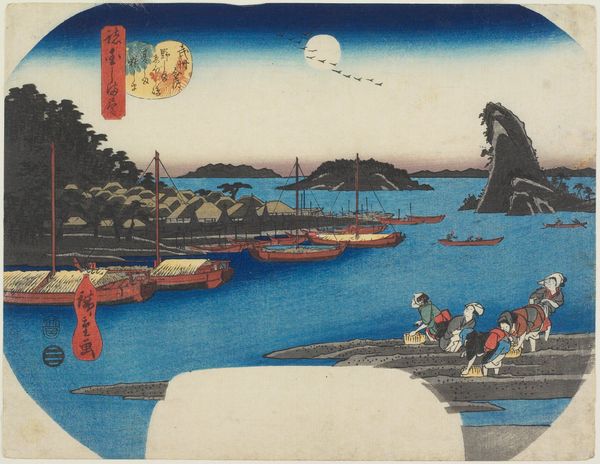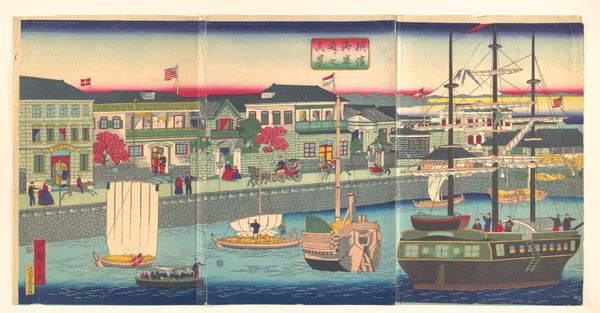
Copyright: Public domain
Editor: This is "Illustration of Horse Racing at Shinobazu in Ueno," an 1885 watercolor painting by Yoshu Chikanobu. The sheer detail and vibrancy are captivating. What can you tell me about this work? Curator: Notice the deliberate depiction of labour and materials, right? The artist emphasizes the material culture on display – the Japanese flags, the architecture, the clothing. They’re all manufactured items, signs of industrializing Japan, part of its political economy. How do you think this ties to the production of the print itself? Editor: That's fascinating. I guess the print as a mass-produced item is itself a reflection of that industrialization. Is the subject matter significant too? Curator: Absolutely. Consider the context of horse racing – an import, a spectacle for the elite. How does the artist negotiate this blending of Japanese tradition, as suggested in the style of Ukiyo-e with its flat perspective and use of line, and Western influence in the adoption of this activity? Editor: It's like they're highlighting the performance of modernization, the deliberate presentation of a new Japan, through a specific class lens, with a nod to the commoner class style. But is there perhaps a tension there, like it might show it to also still being somewhat "foreign"? Curator: Precisely! And the printing technique, the woodblock, allows for the circulation of this image. Mass production democratizing this vision but it always is consumed by an specific class… So, this scene represents a deliberate choice of subject and making process – a means of constructing national identity. Editor: Wow, I never thought of it that way. Thanks, I'm seeing this painting in a whole new light! Curator: Me too. Considering its consumption also adds other relevant perspectives about this Japonisme.
Comments
No comments
Be the first to comment and join the conversation on the ultimate creative platform.
